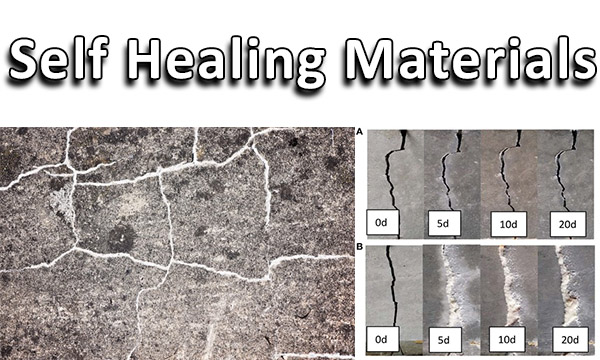The Future Of Self-Healing Materials In Civil Engineering Design

Self-healing materials are materials that have the ability to repair themselves when they are damaged. In recent years, self-healing materials have gained significant attention due to their potential to extend the lifespan of various materials, reduce the need for maintenance and repair, and save money in the long run.
One of the most exciting applications of self-healing materials is in the construction and maintenance of homes. Homeowners can benefit from self-healing materials in multiple ways, including reduced maintenance costs and decreased need for routine repairs.
Benefits of self-healing materials in homes:
1. Self-repairing walls and floors
Self-healing materials can be used to create walls and floors that are capable of healing themselves. This is achieved through the use of embedded capsules that contain healing agents, which are released when the material is damaged. This means that small cracks and scratches can be repaired, eliminating the need for costly and time-consuming repairs.
2. Improved durability
Self-healing materials are more durable than traditional materials. They are less prone to damage, such as cracks and scratches, and can last longer. With self-healing materials, homeowners can enjoy better quality homes and structures that stand up to the test of time.
3. Reduced maintenance costs
Self-healing materials can reduce maintenance costs in homes. With self-repairing walls and floors, repairs are needed less frequently. This means that homeowners can save money on maintenance costs, and spend more time enjoying their homes.
4. Environmentally friendly
Self-healing materials are an environmentally friendly solution. They require less maintenance and repairs, which means fewer resources are needed. They also reduce the amount of waste produced, making them a sustainable alternative to traditional materials.
5. Increased safety
Self-healing materials can increase safety in homes. For example, self-healing concrete can reduce the risk of collapse in structures, while self-healing coatings can prevent corrosion and wear and tear on surfaces, reducing the risk of accidents.
Frequently Asked Questions
1. How do self-healing materials work?
Self-healing materials contain capsules of healing agents that are released when the material is damaged. The healing agents react with the environment, sealing the damaged area.
2. What materials can be made into self-healing materials?
Various materials can be made into self-healing materials, including concrete, asphalt, and coatings. These materials can be used in construction, transportation, and electronics, among other applications.
3. Can self-healing materials save money in the long run?
Yes, self-healing materials can save money in the long run. With reduced maintenance and repair costs, homeowners can save money on their homes. Self-healing materials also have a longer lifespan than traditional materials, reducing the need for replacement.
4. Are self-healing materials safe for humans and the environment?
Yes, self-healing materials are safe for humans and the environment. They contain non-toxic materials, and require fewer resources and produce less waste, making them a sustainable alternative to traditional materials.
5. Can self-healing materials be used in modern homes?
Yes, self-healing materials can be used in modern homes. They are suitable for use in walls, floors, and other structural components. With their improved durability and reduced maintenance costs, self-healing materials can provide homeowners with better quality homes that require less upkeep.
6. How much do self-healing materials cost?
The cost of self-healing materials can vary depending on the type and application of the material. However, over time, self-healing materials can save homeowners money by reducing maintenance and repair costs.
In conclusion, self-healing materials have the potential to revolutionize the construction and maintenance of homes. With reduced maintenance costs, improved durability, and increased safety, homeowners can enjoy better quality homes that stand the test of time. Additionally, self-healing materials are an environmentally friendly solution that can help reduce waste and conserve resources. As such, they represent a smart investment for homeowners who want to save money and contribute to a more sustainable future.


Post a Comment for "The Future Of Self-Healing Materials In Civil Engineering Design"